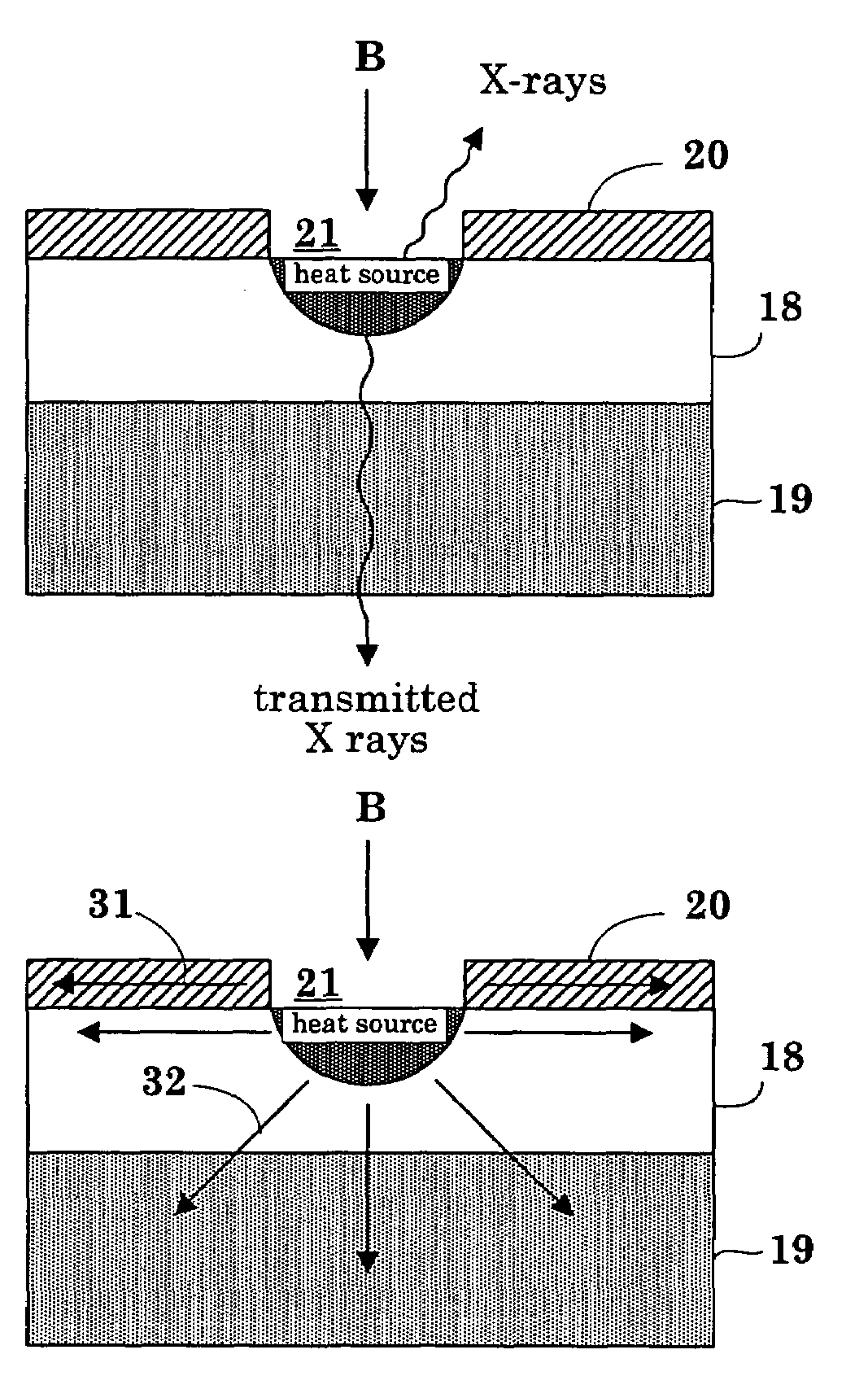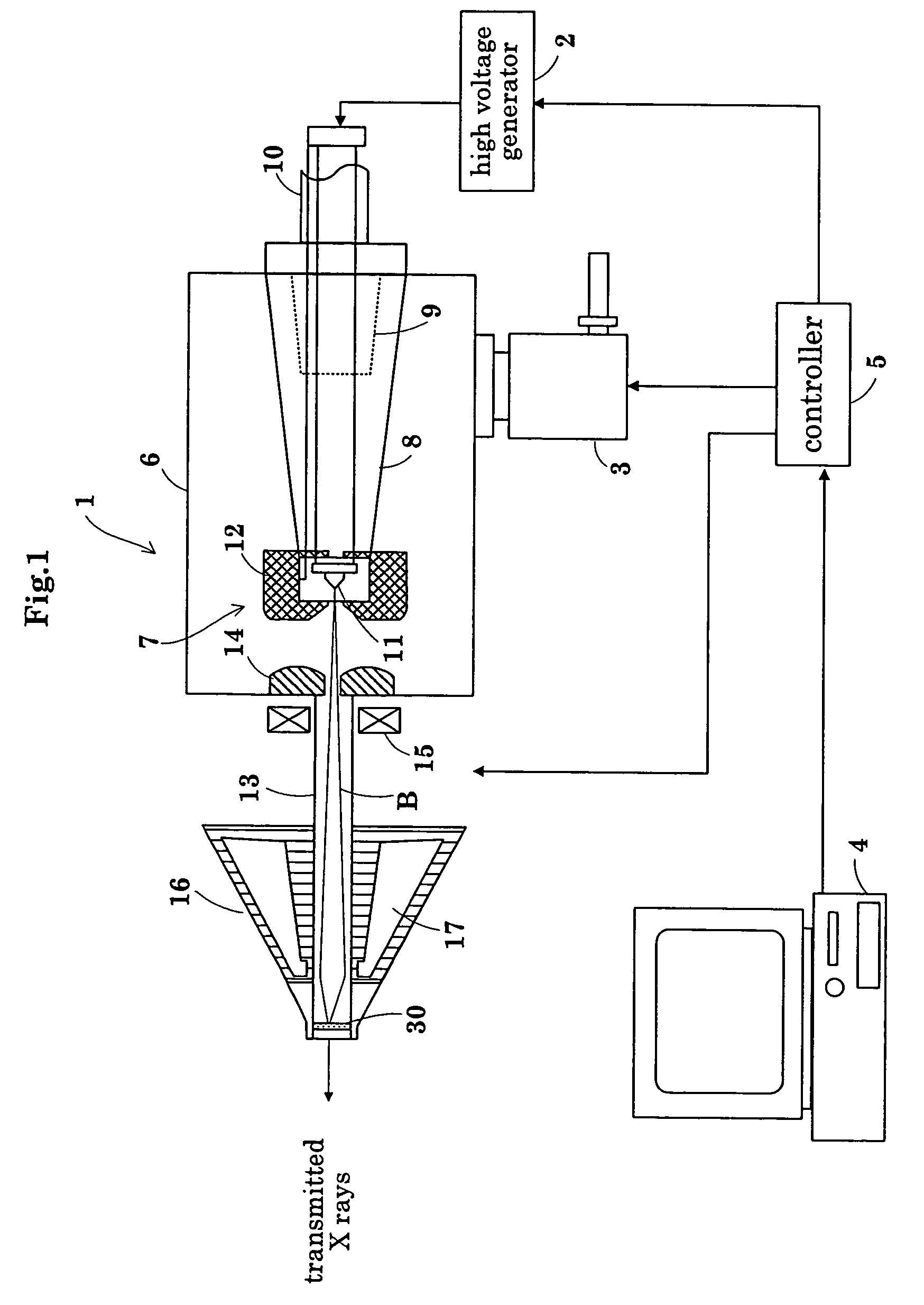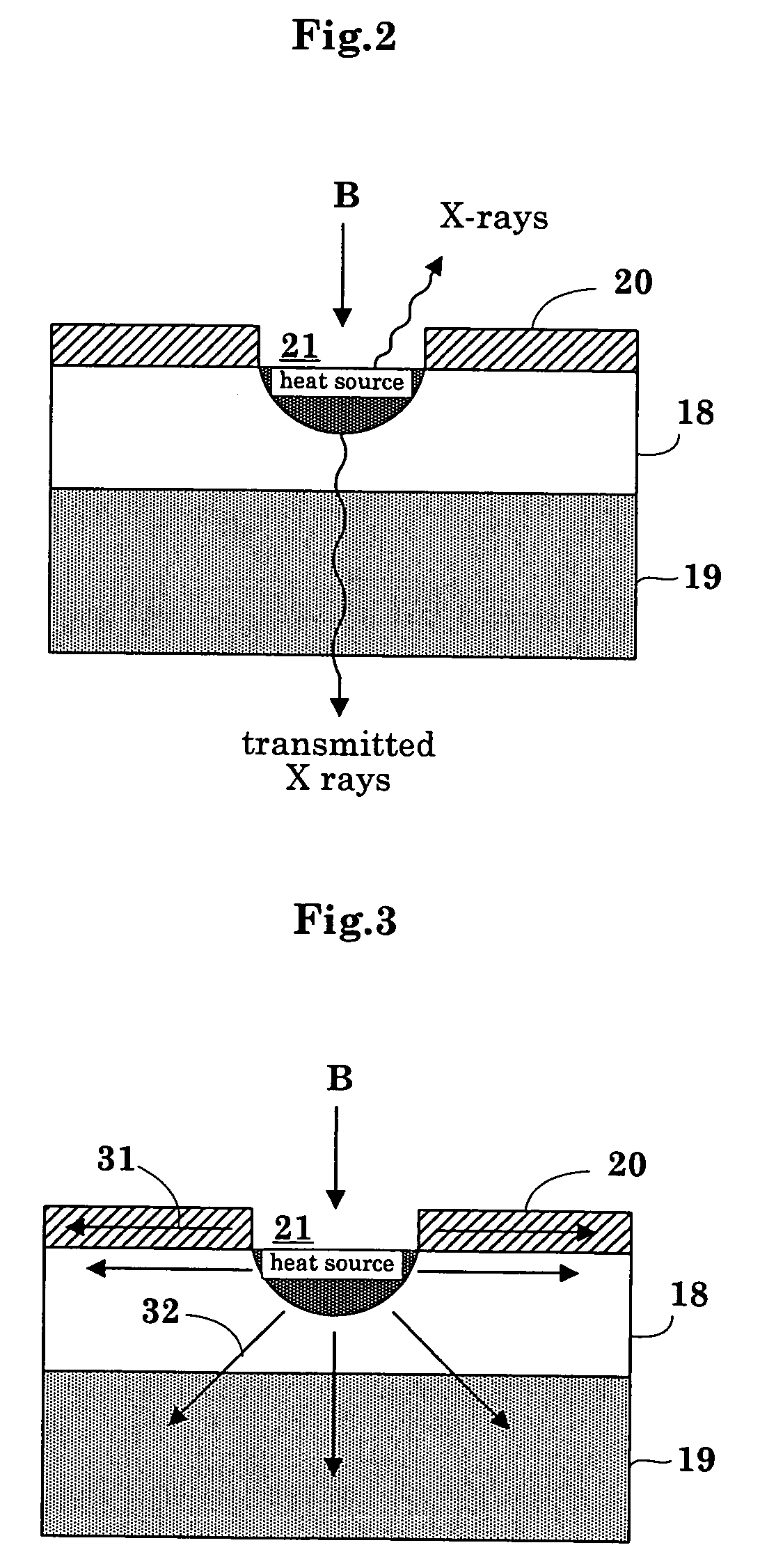X-ray generating apparatus
a generation apparatus and x-ray technology, applied in the micro field, can solve the problems of inability to increase the x-ray dosage, the x-ray focus or failure, and the x-ray emission cannot be stopped, so as to promote the lowering of the temperature on the target surface, the effect of easy dissipation of heat generated in the targ
- Summary
- Abstract
- Description
- Claims
- Application Information
AI Technical Summary
Benefits of technology
Problems solved by technology
Method used
Image
Examples
example 1
[0116]The example shown in FIG. 8 corresponds to claim 8, and the shape of bore 21 differs from the foregoing embodiment. Specifically, the bore 21 has a tapered shape with the inner wall surface converging from the electron beam incoming side toward the target layer 18. That is, the inner wall surface of the bore 21 is tapered to correspond to the shape of electron beam B with the forward end converged in the direction of movement by a lens. The taper has an angle θ which, preferably, is several to 60 degrees, for example, although this depends on the level of convergence of the electron beam B.
[0117]This construction can guide the tapered electron beam B to the target layer 18 without obstructing movement of the electron beam B. In addition, the portion of the surface solid 20 in tight contact with the target layer 18 can be located near where the electron beam B collides with the target surface. Consequently, the temperature of the heated portion on the target surface is lowered ...
example 2
[0119]The example shown in FIG. 9 corresponds to claim 9, in which surface solids 20a–20c are formed in multiple layers on the target surface. The multilayer structure is formed by repeating a film forming process to change materials. For example, the lowermost layer 20a contacts tight with the target layer 18 and is formed from a highly heat-conductive material such as copper or silver. The next, intermediate layer 20b is formed from gold that is highly heat conductive and evaporates in a relatively small amount. The finally, uppermost layer 20c is formed from tungsten or molybdenum which is a high melting point and evaporates in a very small amount.
[0120]With this construction, the intermediate layer 20b and uppermost layer 20c prevent evaporation of the lowermost layer 20a while maintaining the heat-dissipation effect of the lowermost layer 20a. This construction reduces evaporating and so thinning of the surface solid 20 by target heat caused by electron beam irradiation, and ma...
example 3
[0122]The example shown in FIG. 10 corresponds to claim 10, in which surface solids 20a–20c are formed in multiple layers on the target surface. The multilayer structure is arranged adjacent radially of the electron beam. It is preferred in this case that the layer 20a near the electron beam is formed from a high melting point material, and the outer layers 20b,20c are formed from a highly heat-conductive material.
[0123]With this construction, the layer 20a is the highest temperature among layers but evaporation is suppressed by its material nature and by the heat-dissipation of the layer 20b,c. Thus, the X-ray generating apparatus can be used over a long period of time.
PUM
 Login to View More
Login to View More Abstract
Description
Claims
Application Information
 Login to View More
Login to View More - R&D
- Intellectual Property
- Life Sciences
- Materials
- Tech Scout
- Unparalleled Data Quality
- Higher Quality Content
- 60% Fewer Hallucinations
Browse by: Latest US Patents, China's latest patents, Technical Efficacy Thesaurus, Application Domain, Technology Topic, Popular Technical Reports.
© 2025 PatSnap. All rights reserved.Legal|Privacy policy|Modern Slavery Act Transparency Statement|Sitemap|About US| Contact US: help@patsnap.com



